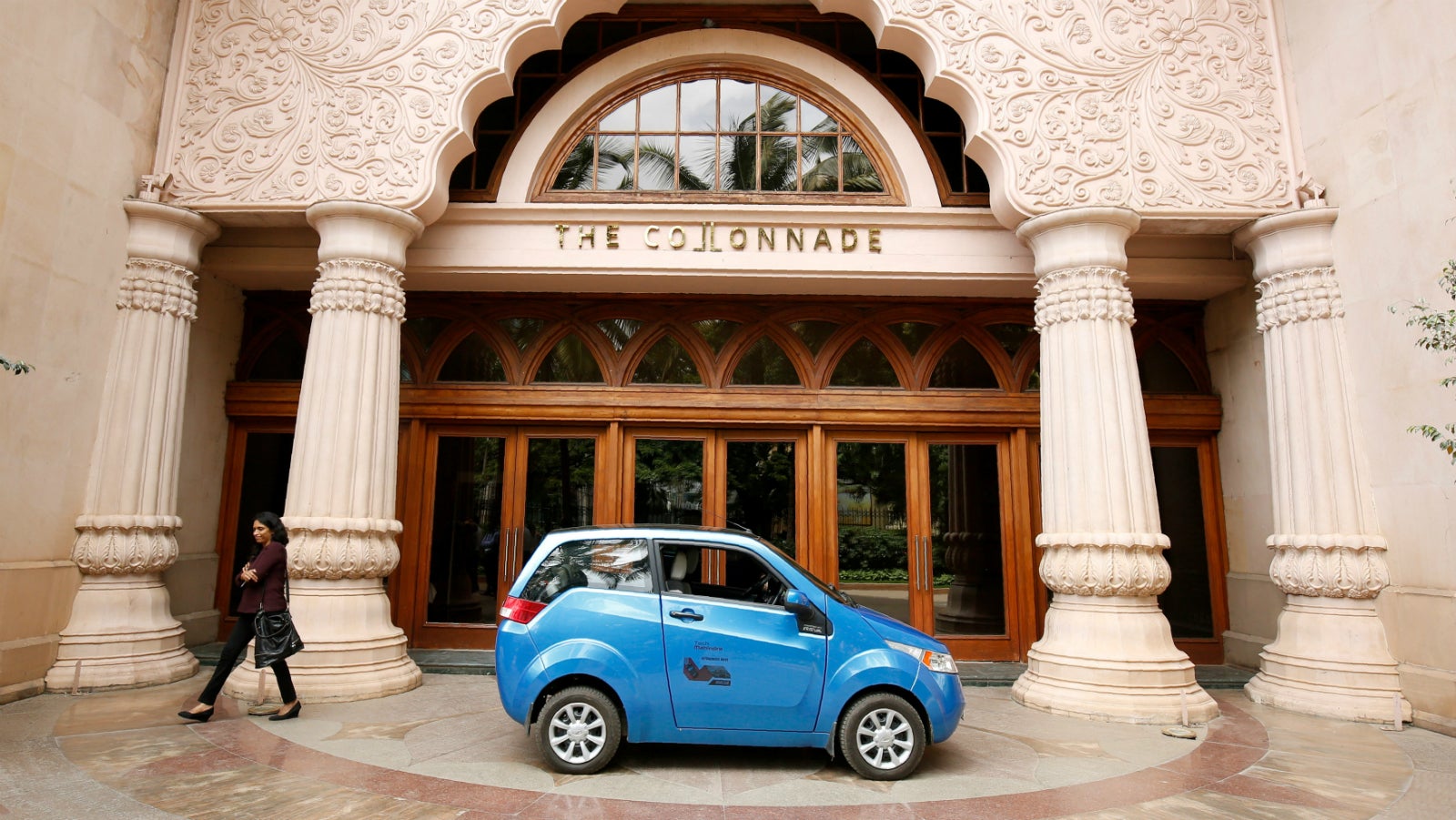Indian carmakers are trying to sell EVs. It won’t be easy
As early as 2010, Mahindra & Mahindra (M&M) foresaw conventional fuel engines losing out.


As early as 2010, Mahindra & Mahindra (M&M) foresaw conventional fuel engines losing out.
That year, the Indian conglomerate, with interests ranging from retail to automobiles, bought a controlling stake in Bengaluru-based Reva Electric Car. The acquisition brought to M&M’s stable the startup’s eponymous battery-powered car, marking its foray into electric vehicles (EVs).
Eight years on, as rivals play catch up, M&M is building on its first-mover advantage. The group now reportedly plans to borrow the expertise of Italian designing major Pininfarina to build a hatchback with an electric power train.
The car is part of Mahindra’s attempt to diversify its portfolio in the utility vehicles segment in India and is expected to take on the very popular Maruti Swift.
“For shared mobility providers, Ola and Uber, a small hatchback makes good economic sense; it will have more pull in the segment,” Pawan Goenka, managing director of M&M, told The Economic Times newspaper on Sept. 17. The hatchback plans may require an investment of up to $120 million (Rs870 crore).
The group also plans to jointly design an electric car with the Ford Motor Company, along the lines of the latter’s Figo subcompact car.
Meanwhile, rivals have also set their sights on the affordable EV space. For instance, in November 2017, it was reported that the electric version of Tata Motors’ compact sedan Tigor would hit the roads soon.
But even before the two companies got serious about bringing EVs to Indian homes they were major suppliers of clean vehicles to the Indian government.
Charging up
The Indian government’s push towards green energy has provided tailwinds to both Tata and Mahindra. The government is also among their biggest clients. The state-owned Energy Efficiency Services, the nodal organisation driving the country’s energy conservation programme, has already procured a few hundred EVs from the two firms for various government departments.
Extending the government’s EV focus, these companies are now trying to make the vehicles more accessible to private consumers. “Global OEMs (original equipment manufacturers) would think on a global scale. But when you talk of Indian OEMs like the Mahindras and Tatas, they have a big market in India itself,” said Puneet Gupta, associate director with global information provider IHS Markit. “So that’s why they have more confidence in the Indian government’s policies. Even without a clear-cut policy, they will make investments and try their best to sell EVs to private customers.”
However, one of the EV firms’ bugbears has been marketability in a highly price-sensitive market like India.
Long road ahead
Convincing customers to switch to the EV lane remains an uphill task as they are priced significantly higher than their petrol/diesel counterparts, particularly the smaller the cars.
But if the result of a recent survey (pdf) is anything to go by, up to 87% of drivers and car owners in India are ready to buy EVs if that helps reduce air pollution. About 77% of the drivers and car owners in New Delhi, a city battling chronic pollution, are likely to consider purchasing EVs, according to the findings of the survey commissioned by Bengaluru-based non-profit Climate Trends.
And that sentiment is what companies are trying to milk.
“By displaying one or two EV models in the showrooms alongside conventional cars, the companies aim at making prospective customers familiar with EVs. Irrespective of who buys and who doesn’t, this is important as it will help customers get used to the idea of them in the showrooms and on the roads,” said Deepesh Rathore, director at consulting firm Emerging Markets Automotive Advisors.
Roadblocks
But despite companies trying to make EVs marketable and consumers’ keenness on the technology, price and a lack of infrastructure remain major impediments.
In 2013, India announced the National Electric Mobility Mission Plan that aimed to achieve national fuel security by promoting hybrid and electric vehicles in the country. But the plan has failed to gather steam primarily due to a paucity of charging stations.
This logistical lacuna has even spawned a new term, “range anxiety,” which denotes a driver’s worry over an electric car’s battery draining out well before reaching a charging point.
With the only alternatives to EVs being the rare CNG-powered vehicles and hybrids, the opportunity for EV makers may be vast but the ride is going to be bumpy.